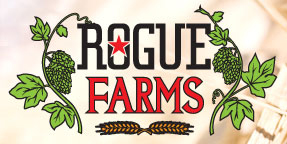A Beautiful Sight At Rogue’s Barley Farm

A field of Risk barley with Tygh Ridge in the background.
We’re just back from an inspection of the Risk™ malting barley fields and the condition of the crop is amazing. We can’t remember the last time we had such a beautiful field of Risk™ barley this early in the year.
The shoots are anywhere from two to six inches high – depending on when we planted them last fall – and a lush green color. Normally, you’re going to find some wilting, curling, brown spots and other discoloration. Those are signs you might have an infestation of pests or disease. We didn’t see anything worth fretting over.
We’ll step up inspections as we get closer to spring. It’s easier to deal with problems when you spot them early. But so far, 2013 is off to a great start.



































